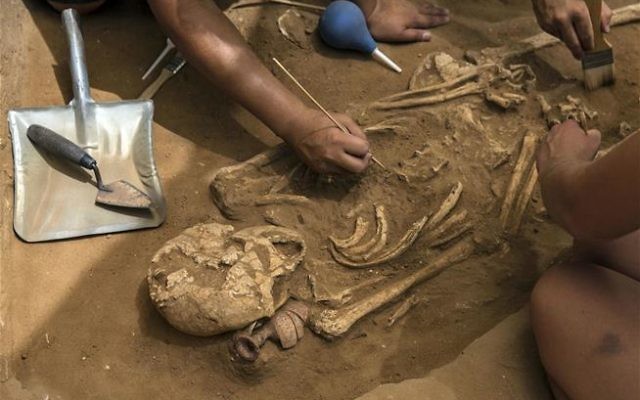Philistine Find May Repair Reputation
The Philistines, some of the Bible’s most infamous villains, may soon have their reputation repaired.
“Goliath’s people” have become so reviled over the past thousand years that their very name has become synonymous with uncultured, violent and unrefined.
But a new discovery made in Ashkelon, Israel, by an international team of researchers may soon shed some light on the long-silent people.
On July 10, the Leon Levy Expedition to Ashkelon announced the discovery of the first Philistine cemetery to ever be found. Archaeologists and scholars have long searched for the origin of the Philistines, and the discovery of the cemetery may be the key to unlock this mystery.
Findings from the cemetery, dated to the 11th to eighth centuries B.C.E., may well support the claim – long inferred and recorded in the Bible – that the Philistines were migrants to the shores of ancient Israel who arrived from lands to the west around the 12th century B.C.E.
The Philistines are most famous as the archenemies of ancient Israel, and excavations at the sites of Ashdod, Ekron, Ashkelon, and Gath (Tell es-Safi) have demonstrated just how culturally distinct they were from the Israelites of that period.
Artifacts uncovered at the cemetery site, including ceramics, jewelry and weapons, as well as the bones themselves, hold the promise of being able to connect the Philistines to populations across the Mediterranean. To this end, bone samples taken from the site are currently undergoing three types of testing – DNA, radiocarbon and biological distance studies – to help determine the Philistines’ origin.
“After decades of studying what Philistines left behind, we have finally come face to face with the people themselves,” said Daniel M. Master, professor of archaeology at Wheaton College. “With this discovery we are close to unlocking the secrets of their origins.”
“Ninety-nine percent of the chapters and articles written about Philistine burial customs should be revised or ignored now that we have the first and only Philistine cemetery found just outside the city walls of Tel Ashkelon, one of the five primary cities of the Philistines,” said Lawrence E. Stager, the Dorot professor of the archaeology of Israel, emeritus, at Harvard University.
Ashkelon was a key Mediterranean port and center for maritime trade from the Bronze Age to the Crusades, when it was destroyed and left uninhabited until modern times. Sporadic excavation began in the 19th century, but the bulk of Ashkelon’s history was only revealed beginning in 1985 with the work of the Leon Levy Expedition.





comments